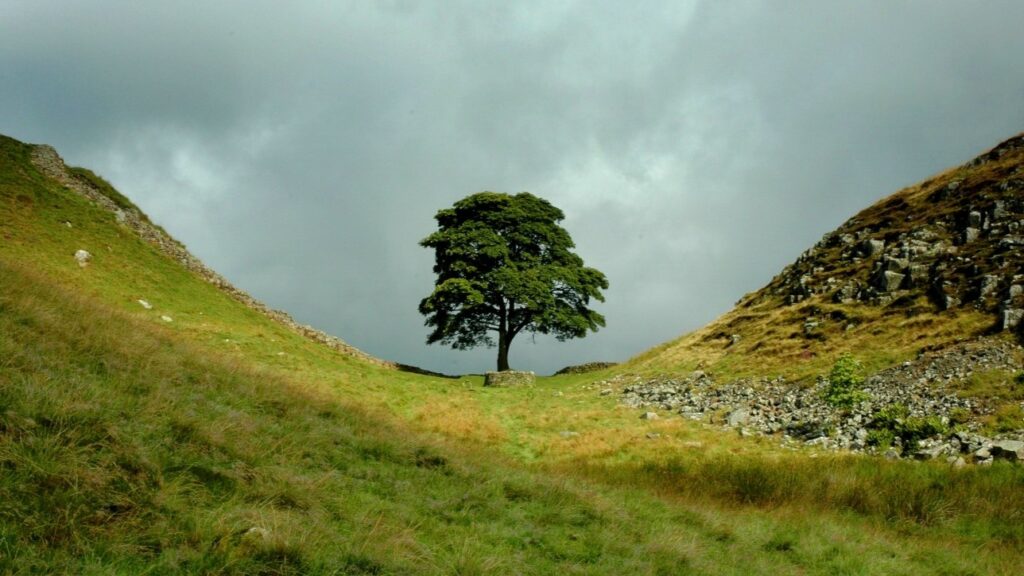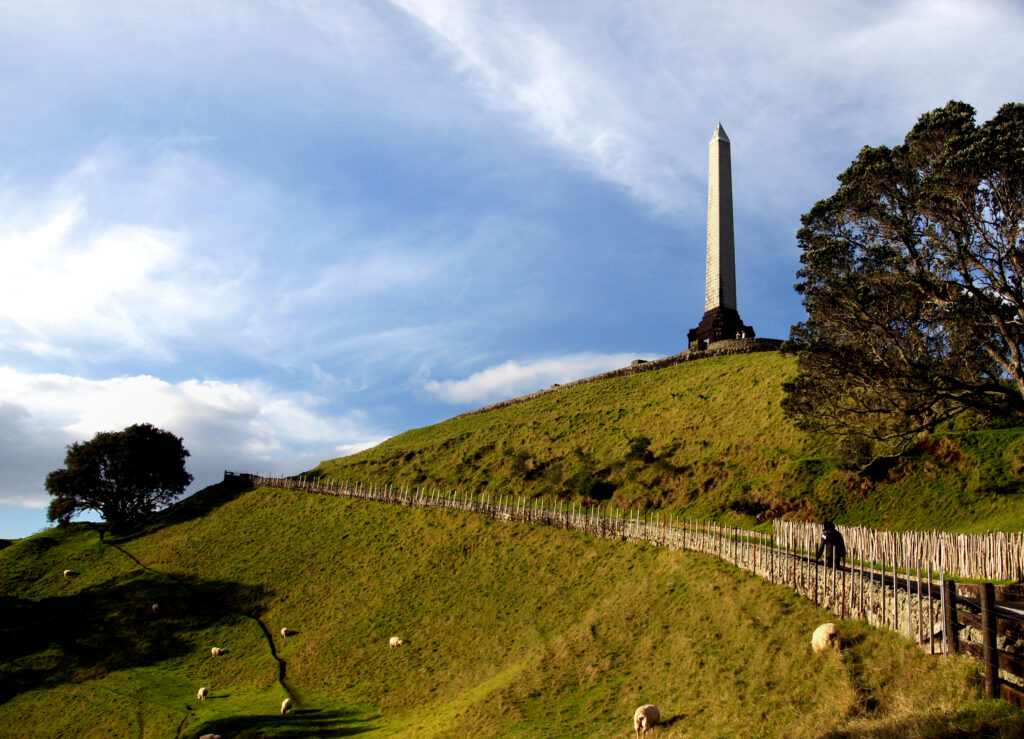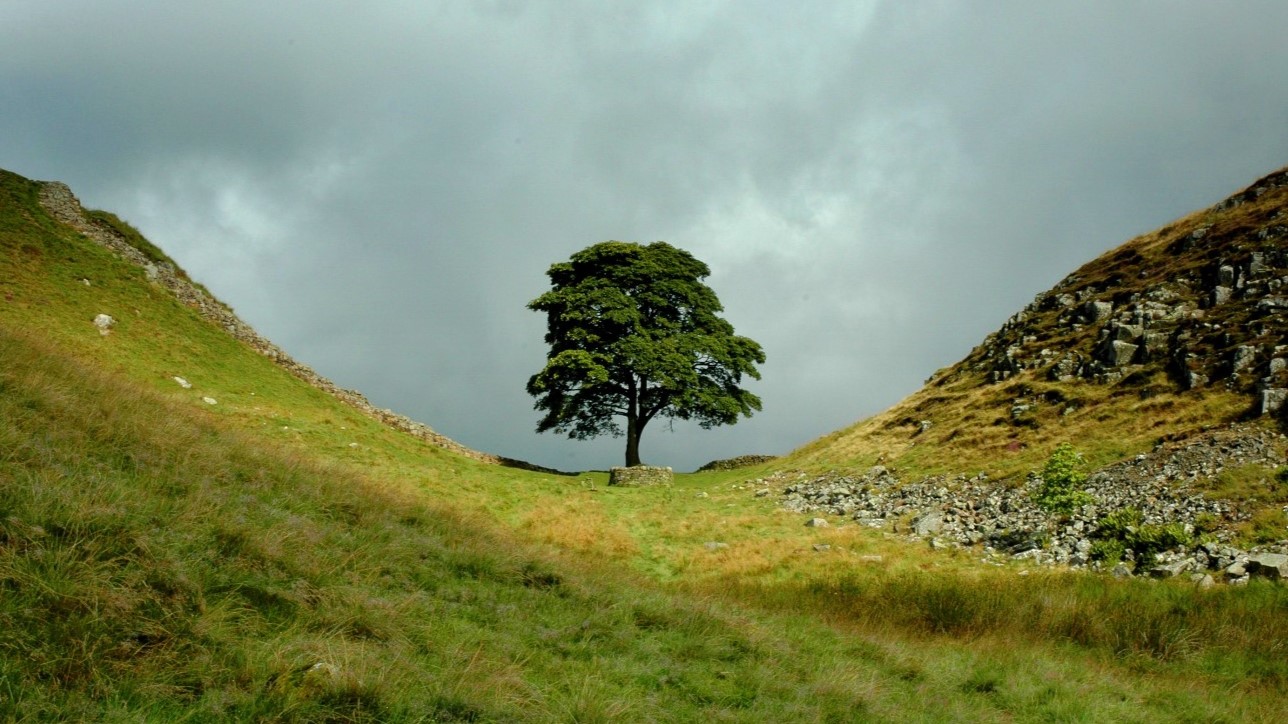The felling of a single sycamore tree prompted an outpouring of grief last week. The tree – known as the “Sycamore Gap” – had been an iconic landmark and its location, Hadrian’s Wall in Northumberland, is a protected Unesco world heritage site.

The Sycamore Gap was an inspiration to photographers and artists and a focal point for common rites of passage – proposals, family reunions, remembering the dead. Planted in the late 19th century, the roots of the Sycamore Gap tree reached deep into individual and collective memory. The legends associated with such trees connect us with the past and remind us that we live in their shadow.
The emotional response to the loss of the Sycamore Gap is part of a long history of emblematic trees, their destruction and renewal. Here are four other examples of emotional tree fellings from history.
1. The Holy Thorn of Glastonbury
According to legend, St. Joseph of Arimathea brought Christianity to England in the first century AD. After reaching Glastonbury in Somerset, he climbed Wearyall Hill, rested and thrust his staff into the ground.
By morning, a miraculous thorn had apparently taken root. This “holy thorn” bloomed not once, but twice a year. The apparent miracle lead Glastonbury to be described as “the holyest erth of Englande”.
Being rooted in the “holyest erth” was no guarantee that the holy thorn would be immune from attack, however. In 1647, the thorn was cut down by a Civil War soldier who deemed it a monument to Roman Catholicism and superstition.
In 1951, a new thorn was planted in its place, but in December 2010 this too was reduced to a stump. In language that echoed the legend of St. Joseph of Arimathea, the perpetrators were described by the director of Glastonbury Abbey, as “mindless vandals who have hacked down this tree” and “struck at the heart of Christianity”.
On April 1 2012, a sapling grafted from a descendant of the pre-1951 thorn was consecrated and planted, but two weeks later it too was damaged beyond recovery.
In May 2019 the landowner removed what remained of the thorn. But despite its chequered history, traditions associated with the holy thorn endure. After the damage caused to the Holy Thorn in 1647, cuttings were taken from which a tree now growing in Glastonbury Abbey is believed to descend. A branch of this thorn in bud has been sent to the British monarch every Christmas since.
2. One Tree Hill
A similarly chequered history belongs to the 125-year-old Monterey Pine which sat on top One Tree Hill or Maungakiekie in Auckland, New Zealand.
Like the Sycamore Gap tree, the pine was an iconic landmark, dominating the skyline. But it was also a focus of controversy as a culturally and spiritually significant place for the Māori and Pākehā people.

The pine had been planted on the peak to replace a native tōtara tree, chopped down by a European settler. Twice – in 1994 and 1999 – attempts were made to destroy the tree as a protest against perceived injustices perpetrated against Māori people, before it was finally removed on safety grounds in 2000.
In 2016, at a dawn ceremony, nine young tōtara and pōhutukawa trees were planted on the hilltop, grown from parent trees on the maunga (the ancestral mountains of the Māori people), establishing a line of succession and memory.
3. Newton’s apple trees
There is a proliferation of “Newton’s apple” trees supposedly descended from the tree under which physicist Isaac Newton devised his law of universal gravity.
The original tree in his Woolsthorpe estate blew down in a gale, but scions (as at Glastonbury) were taken and grafted to create clones.
As a result, “Newton’s apple trees” are now found across the world, their roots connecting to create a library of human history and discovery.
4. The Shawshank Redemption white oak
In 2016, strong winds uprooted a majestic white oak in Mansfield, Ohio in the US, made famous by the 1994 film The Shawshank Redemption. Film fans were distraught and souvenir-hunters rushed to the site, removing parts of the fallen tree.
A local craftsman reached an agreement with the landowner to keep the memory of the tree alive by using its wood to make furniture and fashion mementoes into which quotations from the film were carved. The tree stump itself has vanished beneath the crops that now grow in the field, but its emotional and cultural memory survives – like the Newton Apple Tree – embedded into objects that have been sold around the globe.
Throughout our history, trees have been assigned a religious and magical meaning, a medicinal purpose, a place in film and theatre and a functional value in agriculture and construction. Their branches and roots connect the brief history of humanity and the deeper history of our planet. No wonder then, that we feel their loss acutely.
Helen Parish is a Professor of History at the University of Reading.
This article is republished from The Conversation under a Creative Commons Licence.

